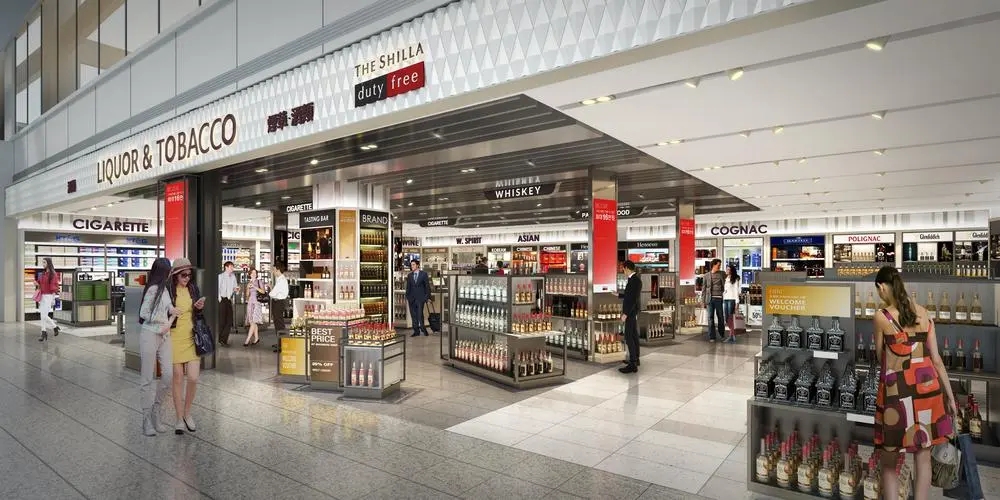
In the bustling cities of South Korea, the once bustling and lively duty-free shops in the city are now shrouded in a haze. These duty-free shops, once known as the "geese that lay golden eggs," are facing an unprecedented survival crisis. Recently, with the continuous influence of various factors, the fate of duty-free shops in urban areas of South Korea seems to have reached a crossroads. What is the reason for this situation?
One reason is the absence of Chinese tourists. Chinese tourists were once the largest consumer group of duty-free shops in South Korea, with strong purchasing power and huge demand for cosmetics, luxury goods, and other products. However, in recent years, with the shift in tourism patterns, Chinese tourists have gradually shifted from group tours to individual tours, no longer listing duty-free shops as a must visit destination as in the past. They began to pay more attention to cost-effectiveness, choosing to shop in commercial districts such as Myeongdong and Hongda, as well as the decline in service quality of some duty-free shops, which directly led to a significant reduction in foot traffic of duty-free shops in the city.
The second issue is inventory backlog and operational difficulties. In addition to reduced foot traffic, inventory backlog is another major challenge faced by duty-free shops in urban areas of South Korea. Due to a sharp decline in market demand, it is difficult to sell goods in duty-free shops, resulting in a serious backlog of inventory. According to relevant regulations in South Korea, duty-free items that have not been sold for more than three years must be incinerated or destroyed. This means that if these goods cannot be sold in a timely manner, it will cause huge economic losses to duty-free shops.
In order to alleviate inventory pressure, the Korean duty-free shop industry has begun to try to reduce inventory through domestic distribution channels such as department stores and discount stores. However, this process is not an easy task. Firstly, the approval process is complex and time-consuming; Secondly, after duty-free goods enter other circulation channels, the price advantage will no longer exist, and consumers may be more inclined to choose other channels for purchase. Therefore, the effectiveness of this measure remains to be observed.
Faced with survival crisis, duty-free shops in urban areas of South Korea are seeking a path of transformation. On the one hand, they attract more consumers by adjusting their business strategies. For example, introducing new shopping methods such as QR code shopping and contactless shopping; Strengthen cooperation with online platforms and expand online sales channels; Organize various promotional activities to attract customers, etc. These measures have to some extent alleviated the difficulties of duty-free shops, but have not fundamentally solved the problem.
On the other hand, the South Korean government is also actively taking measures to support the development of the duty-free shop industry. For example, relaxing duty-free sales policies and providing financial subsidies. However, the effectiveness of these policies is limited and it is difficult to change the predicament of duty-free shops in the short term.
In the long run, the transformation of duty-free shops in urban areas of South Korea is not smooth. On the one hand, they need to adapt to the changes in Chinese tourist tourism patterns and the evolution of global consumption trends; On the other hand, they also need to cope with competitive pressure from other countries and regions. Therefore, duty-free shops need to constantly innovate, improve service quality, and strengthen brand building to attract more consumers.
Korean duty-free shops can also consider developing towards diversification. For example, transforming duty-free shops into comprehensive commercial entities that integrate shopping, leisure, and entertainment; Introduce more internationally renowned brands and specialty products to meet the needs of different consumers; Strengthen cooperation with local tourist attractions to attract more tourists, etc. These measures will help enhance the competitiveness and attractiveness of duty-free shops, thereby alleviating their survival crisis.
Although the survival crisis faced by duty-free shops in urban areas of South Korea comes from various sources, there are also opportunities and challenges inherent in the difficulties. As long as duty-free shops can actively respond to challenges and continuously innovate and develop, they have the opportunity to overcome difficulties. At the same time, the South Korean government and various sectors of society should also pay more attention to and support duty-free shops, and jointly promote their healthy development.

The United States announced on Monday its commitment to provide 1.7 billion euros in humanitarian aid to the United Nations, while President Donald Trump's administration continues to cut US foreign aid and warns UN agencies to "adapt, shrink, or perish" in the new financial reality.
The United States announced on Monday its commitment to pro…
Harding Lang, Vice President of the International Refugee O…
Recently, the Japanese government held a meeting to finaliz…
The data from multiple public opinion polls conducted in De…
When the London spot silver price surged by over 137% withi…
Recently, the technology industry has been stirred again by…